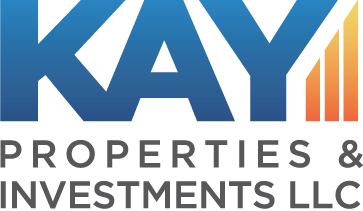By Jason Salmon
Senior Vice President; Managing Director of Real Estate Analytics – Kay Properties & Investments, LLC
Over the course of the past several years, Kay Properties has observed incremental growth in the number of investors choosing Delaware Statutory Trusts (DSTs) as a preferred means of passive real estate investing for like-kind, tax-deferred 1031 exchanges. In this article, we provide basic information about DST investments and other topics pertaining to them. We also answer commonly asked questions like, “Can I buy multiple properties in a 1031 exchange?” and, “Does a 1031 exchange free up passive losses?” Read on!
1031 Exchange Basics
Per section 1031 of the Internal Revenue Code, real estate investors—under specific guidelines—may potentially defer their capital gains tax, depreciation recapture tax, and other taxes (each investor should consult their own CPA/attorney since every situation is unique). Upon the sale of investment real estate, the proceeds would go to a Qualified Intermediary, then the investor must purchase real estate of equal or greater value and has 45 days to “identify” replacement property with a concurrent 180-day timeline to close.
IRS/DSTs
Through what’s known as the Internal Revenue Service’s Revenue Ruling 2004-86, DSTs have been recognized as vehicles for investors looking for like-kind real estate as 1031 exchange replacement property with the ability to conduct another 1031 exchange upon the sale of the DST property.
What is a Passive Real Estate Investment?
For many real estate investors that have had their lives consumed with being pinned to real estate property management and/or asset management responsibilities, DSTs offer the opportunity to be passive and diversified—via the 1031 exchange into multiple DSTs/multiple geographic areas/multiple property types. Diversification does not guarantee profits or protect against losses.
As of the time of writing this article, Kay Properties has over 35 DST offerings available to our clients from over 20 companies that most would consider sophisticated real estate asset managers. As such, real estate sectors represented include, but are not limited to healthcare, multifamily, net-leased real estate (NNN), industrial/distribution, office, student housing and self-storage.
It is important to note that these real estate management companies do not call for investors’ funds, then go out to buy properties. Rather, they’ll typically acquire the real estate first—thereby helping to reduce investor 1031 exchange closing risk—and the DST can be comprised of multiple properties or just a single asset.
DSTs come either with or without debt, so investors conducting a 1031 exchange may find the non-recourse financing already in place useful for the purposes of their transaction. Others might seek out debt-free DSTs as 1031 replacement property if they sold real estate that was unencumbered by debt and do not want the added risks of using financing with real estate investing.
Can you Buy Multiple Properties in a 1031 Exchange?
In our several years of DST investment services and operations, we’ve encountered the question, “Can I buy multiple properties in a 1031 exchange?” often from investors. The answer is a resounding “Yes.” The minimum investment size for 1031 exchange investors is typically $100,000, so in many cases investors can diversify into multiple DST offerings–depending on the size of their transaction.
Several factors have contributed to the industry’s growing popularity including the passive nature of the DST structure in conjunction with the real estate portfolio strategy (by investing with varied DST sponsor companies/asset-managers, locations and property types), and the ability to close quickly. Accredited investors find DSTs to be quite accessible compared to the search for high-quality real estate, negotiating with sellers and having to potentially put all their eggs in one basket. We’re pleased to be able to offer DSTs to our clients with the goal to streamline their 1031 exchange process.
Does a 1031 Exchange Free Up Passive Losses?
Since real estate is a passive activity, according to the rules enacted in 1986, investors cannot use the losses from a passive activity to reduce the tax on their income. In some cases, when an investor has passive activity losses that are more or less equal to their gains, they would benefit from selling the property rather than opting for a 1031 exchange. However, every situation is unique. For this reason, we recommend that you consult with your tax advisor for more information on the probability of 1031 exchange passive losses.
Are You Ready for DST Passive Real Estate Ownership?
After having painstakingly invested in real estate for years, if you’d like to build your passive income now and enjoy a trouble-free existence, devoid of tenant issues, we completely understand your position and need. Whether you’d like to buy multiple properties in a 1031 exchange or a single property, we can help.
No matter what type of DST 1031 property exchange services you’re looking for, Kay Properties and Investments is your one-stop solution as a comprehensive end-to-end DST investment firm. We have built a solid network of sponsors and key personnel in the DST 1031 sponsor industry. Our firm footing helps us match our clients with extraordinary DST offerings and sponsors while providing them with transparent knowledge about the sector.
Our team of highly experienced and expert staff takes the time to understand and evaluate your unique financial situation and investment requirements to fit you with exactly what you need to build a truly diversified portfolio of DST properties and investments.

